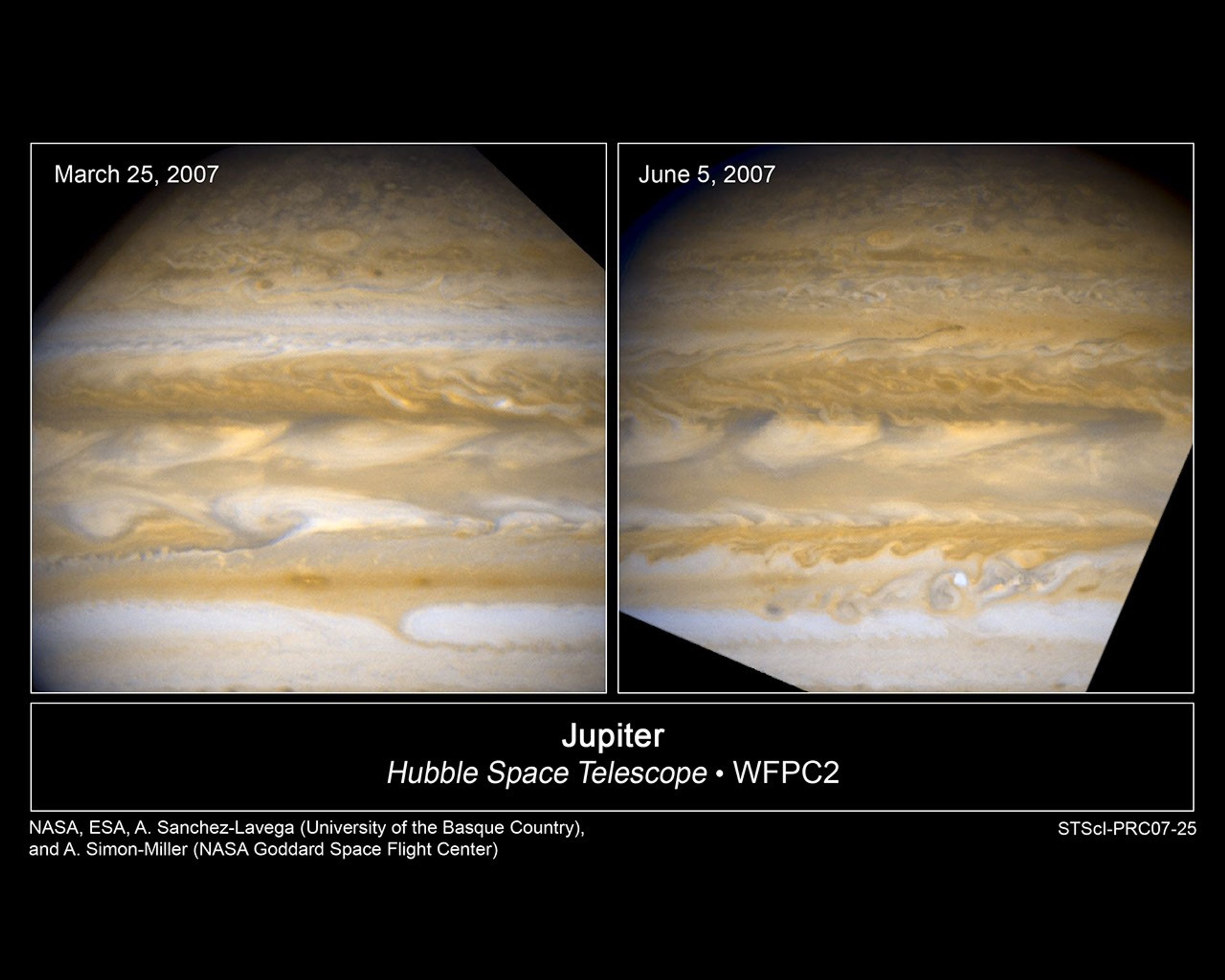1 min read
Jupiter – June 5, 2007

About the Object
- DistanceDistanceThe physical distance from Earth to the astronomical object. Distances within our solar system are usually measured in Astronomical Units (AU). Distances between stars are usually measured in light-years. Interstellar distances can also be measured in parsecs.The semi-major axis of Jupiter's orbit about the sun is 5.2 Astronomical Units (778 million km or 483 million miles).
- DimensionsDimensionsThe physical size of the object or the apparent angle it subtends on the sky.The planet has a diameter of roughly 88,789 miles (142,984 km) at the equator.
About the Data
- Data DescriptionData DescriptionProposal: A description of the observations, their scientific justification, and the links to the data available in the science archive.
Science Team: The astronomers who planned the observations and analyzed the data. "PI" refers to the Principal Investigator.Proposal 11096: K. Noll (STScI), H. Weaver (Johns Hopkins University/Applied Physics Laboratory), A. Simon-Miller (NASA Goddard Space Flight Center), M. Mutchler, H. Bond, C. Christian, Z. Levay, L. Frattare, F. Hamilton, W. Januszewski, and T. Roman (STScI), J. Clarke Boston University), and J. Spencer (Southwest Research Institute) Proposal 11310: A. Sanchez-Lavega, S. Perez-Hoyos, R. Hueso (University of the Basque Country), E. Garcia-Melendo (Institute for Space Studies of Catalonia, Spain), G. Orton (Jet Propulsion Laboratory), and A. Simon-Miller (NASA Goddard Space Flight Center) - InstrumentInstrumentThe science instrument used to produce the data.HST>WFPC2
- Exposure DatesExposure DatesThe date(s) that the telescope made its observations and the total exposure time.June 5, 2007
- Object NameObject NameA name or catalog number that astronomers use to identify an astronomical object.Jupiter
- Object DescriptionObject DescriptionThe type of astronomical object.Planet
- Release DateJune 28, 2007
- Science ReleaseHubble Catches Jupiter Changing Its Stripes
- Credit

Compass and Scale
Compass and ScaleAn astronomical image with a scale that shows how large an object is on the sky, a compass that shows how the object is oriented on the sky, and the filters with which the image was made.
Related Images & Videos

Hubble Catches Jupiter Changing Its Stripes
Massive Jupiter is undergoing dramatic atmospheric changes that have never been seen before with the keen "eye" of NASA's Hubble Space Telescope. Jupiter's turbulent clouds are always changing as they encounter atmospheric disturbances while sweeping around the planet at...
Share
Details
Last Updated
Aug 17, 2025
Contact
Media
Claire Andreoli
NASA’s Goddard Space Flight Center
Greenbelt, Maryland
claire.andreoli@nasa.gov































